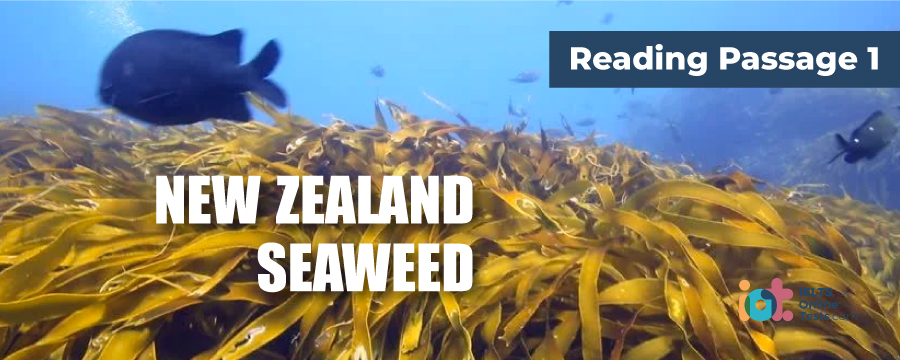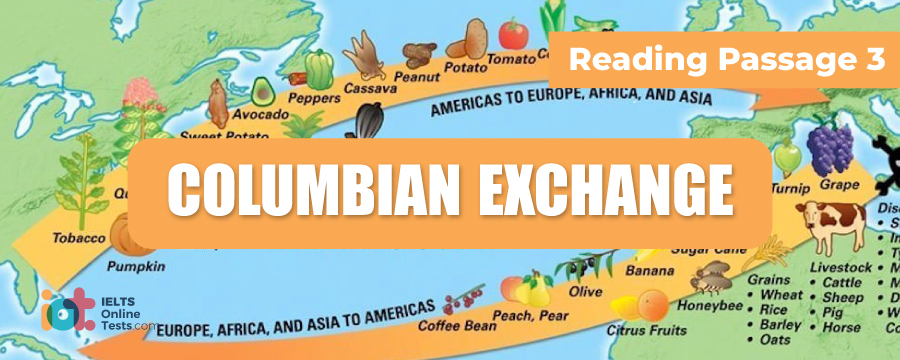
IELTS Recent Mock Tests Volume 2
- Đăng ngày: 05 Dec 2017
- Tests taken: 951,187
Đáp án
Part 1: Question 1 - 13
- 1 v
- 2 ii
- 3 viii
- 4 i
- 5 x
- 6 vi
- 7 New Zealand carrageen(s)
- 8 agar
- 9 seameal
- 10 cough mixture
- 11 A
- 12 C
- 13 B
- 1 v
- 2 ii
- 3 viii
- 4 i
- 5 x
- 6 vi
- 7 New Zealand carrageen(s)
- 8 agar
- 9 seameal
- 10 cough mixture
- 11 A
- 12 C
- 13 B
Part 2: Question 14 - 26
- 14 7/seven
- 15 lung function
- 16 immune system
- 17 heart patients
- 18 C
- 19 A
- 20 E
- 21 G
- 22 D
- 23 NOT GIVEN
- 24 NOT GIVEN
- 25 YES
- 26 YES
- 14 7/seven
- 15 lung function
- 16 immune system
- 17 heart patients
- 18 C
- 19 A
- 20 E
- 21 G
- 22 D
- 23 NOT GIVEN
- 24 NOT GIVEN
- 25 YES
- 26 YES
Part 3: Question 27 - 40
- 27 C
- 28 G
- 29 A
- 30 E
- 31 B
- 32 F
- 33 H
- 34 D
- 35 FALSE
- 36 TRUE
- 37 FALSE
- 38 TRUE
- 39 missionaries and traders
- 40 (the) demographic triumph
- 27 C
- 28 G
- 29 A
- 30 E
- 31 B
- 32 F
- 33 H
- 34 D
- 35 FALSE
- 36 TRUE
- 37 FALSE
- 38 TRUE
- 39 missionaries and traders
- 40 (the) demographic triumph
Leaderboard:
| # | Thành viên | Điểm | Thời gian | |
|---|---|---|---|---|
| gia khanh |  | 9.0 | 15:25 | |
| Alex uyên |  | 9.0 | 15:35 | |
| thanhson0145 |  | 9.0 | 16:18 | |
| 4 | Trần Thái |  | 9.0 | 16:37 |
| 5 | Monika Jhammt |  | 9.0 | 17:08 |
| 6 | Atith Patel |  | 9.0 | 17:24 |
| 7 | sudharshan sundararajan |  | 9.0 | 17:34 |
| 8 | Uday Kumar |  | 9.0 | 17:35 |
| 9 | Hoàng Khôi Nguyên |  | 9.0 | 17:49 |
| 10 | Uyen Minh |  | 9.0 | 18:32 |
Giải thích chi tiết
Questions 1-6
Reading Passage 1 has six sections A-F.
Choose the correct heading for each section from the list of headings below.
Write the correct number i-x in boxes 1-6 on your answer sheet.
| i | Locations and features of different seaweeds |
| ii | Various products of seaweeds |
| iii | Use of seaweeds in Japan |
| iv | Seaweed species around the globe |
| v | Nutritious value of seaweeds |
| vi | Why it doesn't dry or sink |
| vii | Where to find red seaweeds |
| viii | Underuse of native species |
| ix | Mystery solved |
| x | How seaweeds reproduce and grow |
1 Section A
2 Section B
3 Section C
4 Section D
5 Section E
6 Section F
- 1 Answer: v
Keywords in Answer
Similar words in Passage
Q1: Nutritious value of seaweeds
Seaweed is a particularly nutritious food , which absorbs and concentrates traces of a wide variety of minerals necessary to the body's health. Many elements may occur in seaweed - aluminium, barium, calcium, chlorine, copper, iodine and iron, to name but a few - traces normally produced by erosion and carried to the seaweed beds by river and sea currents. Seaweeds are also rich in vitamins.
Q1: Matching section A with the correct heading
First of all, take a quick look at section A. Right the first sentence “Seaweed is a particularly nutritious food, which absorbs and concentrates traces of a wide variety of minerals necessary to the body's health”, we can easily predict the main idea, which states that seaweed is a valuable food in terms of nutrition. Keeping on reading, we notice that other elements are also included in seaweed “Many elements may occur in seaweed - aluminium, barium, calcium, chlorine, copper, iodine and iron, to name but a few - traces normally produced by erosion and carried to the seaweed beds by river and sea currents. Seaweeds are also rich in vitamins”. Another important sign to illustrate nutritious value of seaweed lies in the first sentence of following paragraph “The nutritive value of seaweed has long been recognized”. It is obvious, therefore, that the correct answer is v Nutritious value of seaweeds
- 2 Answer: ii
Q2: Matching section B with the correct heading
From section B, we easily notice that there are a wide range of things made from seaweed thanks to agar. “The gel-forming substance called agar which can be extracted from this species gives them great commercial application in seameal, from which seameal custard is made, and in cough mixture, confectionery, cosmetics, the canning, paint and leather industries, the manufacture of duplicating pads, and in toothpaste”. As a result, the correct answer is ii Various products of seaweeds
Keywords in Answer
Similar words in Passage
Q2: Various products of seaweeds
The gel-forming substance called agar which can be extracted from this species gives them great commercial application in seameal, from which seameal custard is made, and in cough mixture, confectionery, cosmetics, the canning, paint and leather industries, the manufacture of duplicating pads, and in toothpaste.
- 3 Answer: viii
Q3: Matching section C with the correct heading
Right in the first sentence of section C, it is clearly stated despite the fact that seaweeds help boost New Zealand economically, there are still some agar species which are not used a lot. “Yet although New Zealand has so much of the commercially profitable red seaweeds, several of which are a source of agar (Pterocladia, Gelidium, Chondrus, Gigartina), before 1940 relatively little use was made of them.” Therefore, the correct answer is viii. Underuse of native species
Keywords in Answer
Similar words in Passage
Q3: Underuse of native species
Yet although New Zealand has so much of the commercially profitable red seaweeds, several of which are a source of agar (Pterocladia, Gelidium, Chondrus, Gigartina), before 1940 relatively little use was made of them.
- 4 Answer: i
Q4: Matching section D with the correct heading
The very first sentence of section D refers to special features of seaweeds, which are categorized according to colour, and each category with a specific colour often live in a certain place. “Seaweeds are divided into three classes determined by colour - red, brown and green - and each tends to live in a specific location.” Surely, consequently, we decide the correct answer is i. Locations and features of different seaweeds
Keywords in Answer
Similar words in Passage
Q4: Locations and features of different seaweeds
Seaweeds are divided into three classes determined by colour - red, brown and green - and each tends to live in a specific location
- 5 Answer: x
Q5: Matching section E with the correct heading
The key lies in the first sentence of section E “Propagation of seaweeds occurs by spores, or by fertilisation of egg cells.” There are two methods for seaweeds to reproduce and grow again, namely spores and fertilization of egg cells. As a consequence, there is no doubt that the correct answer is x. How seaweeds reproduce and grow
Keywords in Answer
Similar words in Passage
Q5: How seaweeds reproduce and grow
Propagation of seaweeds occurs by spores, or by fertilisation of egg cells.
- 6 Answer: vi
Q6: Matching section F with the correct heading
In the last section, the author mentions an approach, which is considered coating of mucilage, to keep the seaweeds wet and prevent it from sinking “this coating is not only to keep the plant moist but also to protect it from the violent action of waves.” Surely, the correct answer is vi. Why it doesn't dry or sink.
Keywords in Answer
Similar words in Passage
Q6: Why it doesn't dry or sink
this coating is not only to keep the plant moist but also to protect it from the violent action of waves.
Questions 7-10
Complete the flow chart below.
Choose NO MORE THAN THREE WORDS from the passage for each answer.
Write your answers in boxes 7-10 on your answer sheet.

7
8
9
10
- 7 Answer: New Zealand carrageen(s)
Keywords in Questions
Similar words in Passage
Q7: Gigartina is also called as
____.
For example, it is estimated that New Zealand has some 30 species of Gigartina, a close relative of carrageen or Irish moss. These are often referred to as the New Zealand carrageens.
Note:
Thanks to the keyword “Gigartina” at the top, we can quickly locate where the needed information containing the answers is and infer that the paragraph would revolve around Gigartina issue. Thus, we start searching for answers in section B.
Q7: From the question, we can assume that the answer must be a Noun, which is another name of Gigartina. Additionally, the sentence “For example, it is estimated that New Zealand has some 30 species of Gigartina, a close relative of carrageen or Irish moss. These are often referred to as the New Zealand carrageens.” contains all the keywords listed above. Therefore, the answer must be somewhere in this sentence. Therefore, the answer must be New Zealand carrageen/New Zealand carrageens.
- 8 Answer: agar
Keywords in Questions
Similar words in Passage
New Zaeland carrageens is made into _________.
The gel-forming substance called agar which can be extracted from this species _______
Q8: From the question, we can assume that the answer must be a Noun, something is extracted from New Zealand carrageens. Additionally, the sentence: “The gel-forming substance called agar which can be extracted from this species…” contains all the keywords listed above. Therefore, the answer must be somewhere in this sentence. Thus, the answer must be agar.
- 9 Answer: seameal
Keywords in Questions
Similar words in Passage
Q9: Agar is used to produce ____ (canned or bottled food)
The gel-forming substance called agar which can be extracted from this species gives them great commercial application in seameal, from which seameal custard is made, and in cough mixture , confectionery, cosmetics, the canning, paint and leather industries, the manufacture of duplicating pads, and in toothpaste.
From the question, we can assume that the answer must be a Noun, which names a product made from agar. The answer for this question relates to food. Scanning through the passage, we can locate the sentence containing this information. "food" refers to "seameal custard" in the passage. This is a subproduct of "seameal", which is made from agar. Thus, the answers for question 9 must be seameal.
- 10 Answer: cough mixture
Keywords in Questions
Similar words in Passage
Q10: Agar is used to produce seameal (canned or bottled food) and medicine (eg:_____), toothpaste, others.
The gel-forming substance called agar which can be extracted from this species gives them great commercial application in seameal, from which seameal custard is made, and in cough mixture , confectionery, cosmetics, the canning, paint and leather industries, the manufacture of duplicating pads, and in toothpaste.
From the question, we can assume that each answer must be a Noun, which is the product made from agar and is a kind of medicine. Following question 9 we can find the answer for question 10 easily. Of all these products, only "cough mixture" relates to medicine. Thus, the answers for question 9 and 10 must be cough mixture.
Questions 11-13
Classify the following description as relating to
| A | Green seaweeds |
| B | Brown seaweeds |
| C | Red seaweeds |
Write the correct letter A, B, or C in boxes 11-13 on your answer sheet.
11 Can resist exposure to sunlight at high-water mark
12 Grow in far open sea water
13 Share their habitat with karengo
- 11 Answer: A
Keywords in Questions
Similar words in Passage
Q11: Can resist exposure to sunlight at high-water mark
the green seaweeds are mainly shallow-water algae
Note:
Thanks to the 3 keywords Green seaweeds, Brown seaweeds, Red seaweed, we can quickly locate the answers are in section D. Thus, we start searching for answers in section D.
Q11: The sentence “the green seaweeds are mainly shallow-water algae” contains all the keywords listed above. Therefore, the answer must be A. green seaweeds
- 12 Answer: C
Keywords in Questions
Similar words in Passage
Q12: Grow in far open sea water
the reds are plants of the deeper water
Q12: The sentence “the reds are plants of the deeper water” contains all the keywords listed above. Therefore, the answer must be C. red seaweeds.
- 13 Answer: B
Keywords in Questions
Similar words in Passage
Q13: Share their habitat with karengo
Flat rock surfaces near mid-level tides are the most usual habitat of sea bombs, Venus’ necklace and most brown seaweeds. This is also the location of the purple laver or Maori karengo
Q13: Two sentences “Flat rock surfaces near mid-level tides are the most usual habitat of sea bombs, Venus’ necklace and most brown seaweeds. This is also the location of the purple laver or Maori karengo” contain all the keywords listed above. Therefore, the answer must be B. brown seaweeds.
READING PASSAGE 1
You should spend about 20 minutes on Questions 1-13, which are based on Reading Passage 1 below.

New Zealand Seaweed
Call us not weeds; we are flowers of the sea.
Section A - Nutritious value of seaweeds
Seaweed is a particularly nutritious food, which absorbs and concentrates traces of a wide variety of minerals necessary to the body's health. Many elements may occur in seaweed - aluminium, barium, calcium, chlorine, copper, iodine and iron, to name but a few - traces normally produced by erosion and carried to the seaweed beds by river and sea currents. Seaweeds are also rich in vitamins: indeed, Eskimos obtain a high proportion of their bodily requirements of vitamin C from the seaweeds they eat.
The nutritive value of seaweed has long been recognised. For instance, there is a remarkably low incidence of goitre amongst the Japanese, and for that matter, amongst our own Maori people, who have always eaten seaweeds, and this may well be attributed to the high iodine content of this food. Research into old Maori eating customs shows that jellies were made using seaweeds, fresh fruit and nuts, fuchsia and tutu berries, cape gooseberries, and many other fruits which either grew here naturally or were sown from seeds brought by settlers and explorers.
Section B - Various products of seaweeds
New Zealand lays claim to approximately 700 species of seaweed, some of which have no representation outside this country. Of several species grown worldwide, New Zealand also has a particularly large share. For example, it is estimated that New Zealand has some 30 species of Gigartina, a close relative of carrageen or Irish moss. These are often referred to as the New Zealand carrageens. The gel-forming substance called agar which can be extracted from this species gives them great commercial application in seameal, from which seameal custard is made, and in cough mixture, confectionery, cosmetics, the canning, paint and leather industries, the manufacture of duplicating pads, and in toothpaste. In fact, during World War II, New Zealand Gigartina were sent toAustralia to be used in toothpaste.
Section C - Underuse of native species
Yet although New Zealand has so much of the commercially profitable red seaweeds, several of which are a source of agar (Pterocladia, Gelidium, Chondrus, Gigartina), before 1940 relatively little use was made of them. New Zealand used to import the Northern Hemisphere Irish moss (Chondrus crispus) from England and ready-made agar from Japan. Although distribution of the Gigartina is confined to certain areas according to species, it is only on the east coast of the North Island that its occurrence is rare. And even then, the east coast, and the area around Hokiangna, have a considerable supply of the two species of Pterocladia from which agar is also available. Happily, New Zealand-made agar is now obtainable in health food shops.
Section D - Locations and features of different seaweeds
Seaweeds are divided into three classes determined by colour - red, brown and green - and each tends to live in a specific location. However, except for the unmistakable sea lettuce (Ulva), few are totally one colour; and especially when dry, some species can change colour quite significantly - a brown one may turn quite black, or a red one appear black, brown, pink or purple.
Identification is nevertheless facilitated by the fact that the factors which determine where a seaweed will grow are quite precise, and they therefore tend to occur in very well-defined zones. Although there are exceptions, the green seaweeds are mainly shallow-water algae; the browns belong to medium depths, and the reds are plants of the deeper water. Flat rock surfaces near mid-level tides are the most usual habitat of sea bombs, Venus’ necklace and most brown seaweeds. This is also the location of the purple laver or Maori karengo, which looks rather like a reddish-purple lettuce. Deep-water rocks on open coasts, exposed only at very low tide, are usually the site of bull kelp, strap weeds and similar tough specimens. Those species able to resist long periods of exposure to the sun and air are usually found on the upper shore, while those less able to stand such exposure occur nearer to or below the low-water mark. Radiation from the sun, the temperature level, and the length of time immersed all play a part in the zoning of seaweeds.
Section E - How seaweeds reproduce and grow
Propagation of seaweeds occurs by spores, or by fertilisation of egg cells. None have roots in the usual sense; few have leaves, and none have flowers, fruits or seeds. The plants absorb their nourishment through their fronds when they are surrounded by water: the base or "holdfast" of seaweeds is purely an attaching organ, not an absorbing one.
Section F - Why it doesn't dry or sink
Some of the large seaweeds maintain buoyancy with air-filled floats; others, such as bull kelp, have large cells filled with air. Some, which spend a good part of their time exposed to the air, often reduce dehydration either by having swollen stems that contain water, or they may (like Venus' necklace) have | swollen nodules, or they may have distinctive shape like a sea bomb. Others, like the sea cactus, are filled with slimy fluid or have coating of mucilage on % the surface. In some of the larger kelps, this coating is not only to keep the plant moist but also to protect it from the violent action of waves.
----------------------------------------------------
Great thanks to volunteer Ngoc Nguyen who has contributed these explanations and markings.
If you want to make a better world like this, please contact us at hi@ieltsonlinetests.com.






